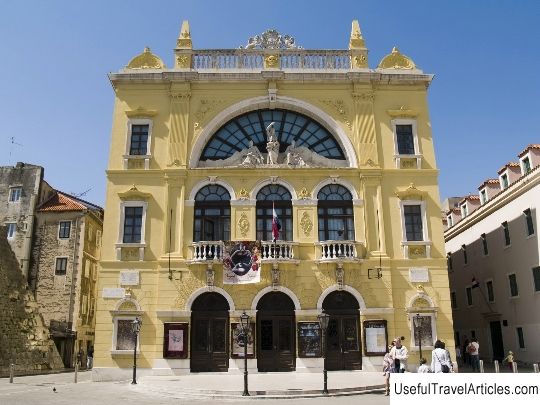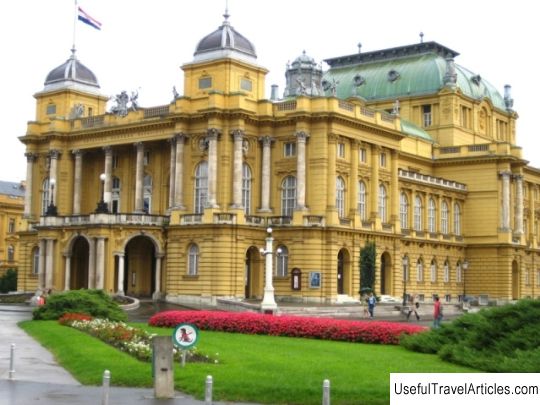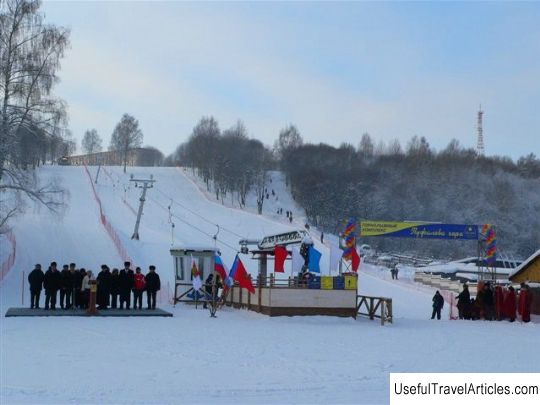Croatian National Theater (Hrvatsko narodno kazaliste) description and photos - Croatia: Split
Rating: 7,5/10 (100 votes) 
Croatian National Theater (Hrvatsko narodno kazaliste) description and photos - Croatia: Split. Detailed information about the attraction. Description, photographs and a map showing the nearest significant objects. The name in English is Hrvatsko narodno kazaliste. Photo and descriptionThe history of the Croatian National Theater in Split is quite long and complex. The theater was built as a municipal theater of the city of Split during the reign of Mayor G. Bulat in 1893. The building was designed by local architects. At that time, the theater was one of the largest in Southeast Europe. It accommodated 1000 people at the same time with a population of 16,000 people in Split. Initially, the building was used for theatrical performances of visiting troupes, mainly Italian, since there was no drama troupe in the city until the 19th century. The first professional theater company appeared in 1920, when the theater building was first reconstructed, and the theater was renamed "National Theater of Dalmatia". In 1928, during the Kingdom of Yugoslavia, the theater was merged with the National Theater in Sarajevo and renamed the National Theater for the Western Regions. In the same year, the authorities disbanded the professional ensemble of actors. However, a group of artists led by Ivo Tizardovic formed the Split Theater Society, which continued to stage operas and operettas in 1930. In 1940, the theater experienced a short period of revival, adopting its current name and for the first time typing opera, ballet and a drama troupe. But the revival proved short-lived, as the theater was closed again in 1941 during the Italian occupation of World War II, when part of southern Croatia was incorporated into the military governorate of Dalmatia. At the end of the war, the theater was restored and its first season was opened in September 1945. The theater is still operating. However, in 1970 the theater was completely destroyed by fire. It was restored only in 1980. Now the Croatian National Theater shows about 300 performances a year, receiving about 120,000 spectators. It hosts about 20-40 opera, ballet and drama performances a year, as well as many symphony concerts. The theater is called “The first theater house in Dalmatia” and “one of the largest and oldest theater houses in the Mediterranean.” In addition to its regular repertoire, the Croatian National Theater holds two long-term festivals every year: Split Summer Festival and Marulic Days. The Summer Festival was founded in 1954 and is the second oldest performing arts festival in the country. Usually the festival lasts about 30 days from mid-July to mid-August and includes a huge variety of events: open-air jazz, classical music concerts, art exhibitions, theatrical performances in squares, modern dance shows, etc. Festival "Days of Marulich" was created in 1991 on the 490th anniversary of the publication of Judit, one of the most important literary works, which was written by M. Marulich in the 16th century. The week-long festival took place in April, which showcased the best achievements of Croatian drama of the past year.     We also recommend reading Jewish quarter and Asansor lift description and photos - Turkey: Izmir Topic: Croatian National Theater (Hrvatsko narodno kazaliste) description and photos - Croatia: Split. |




